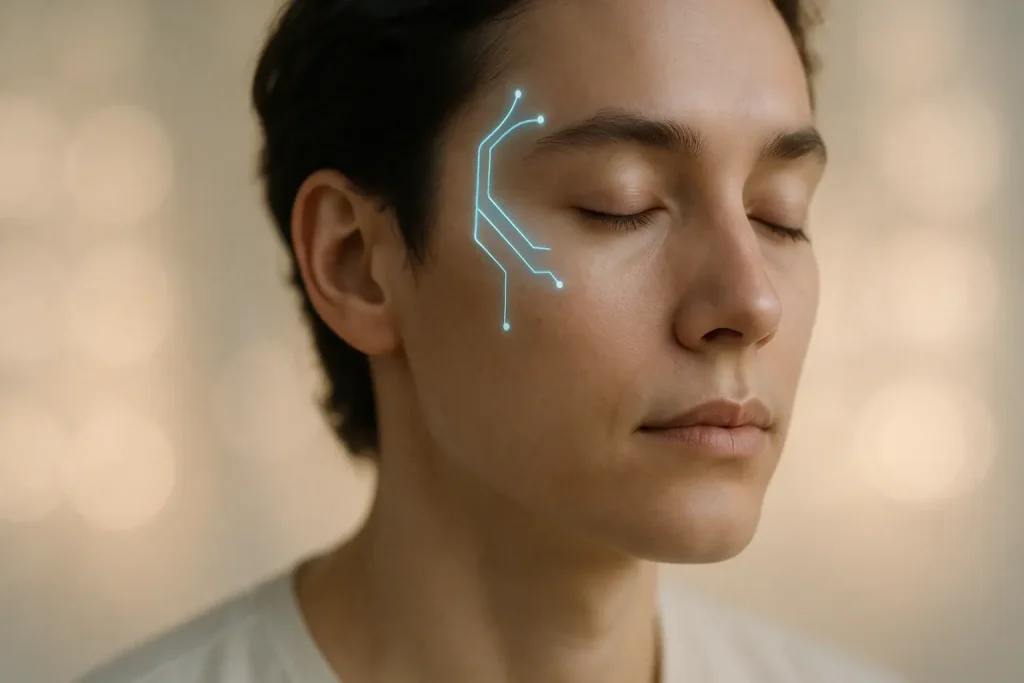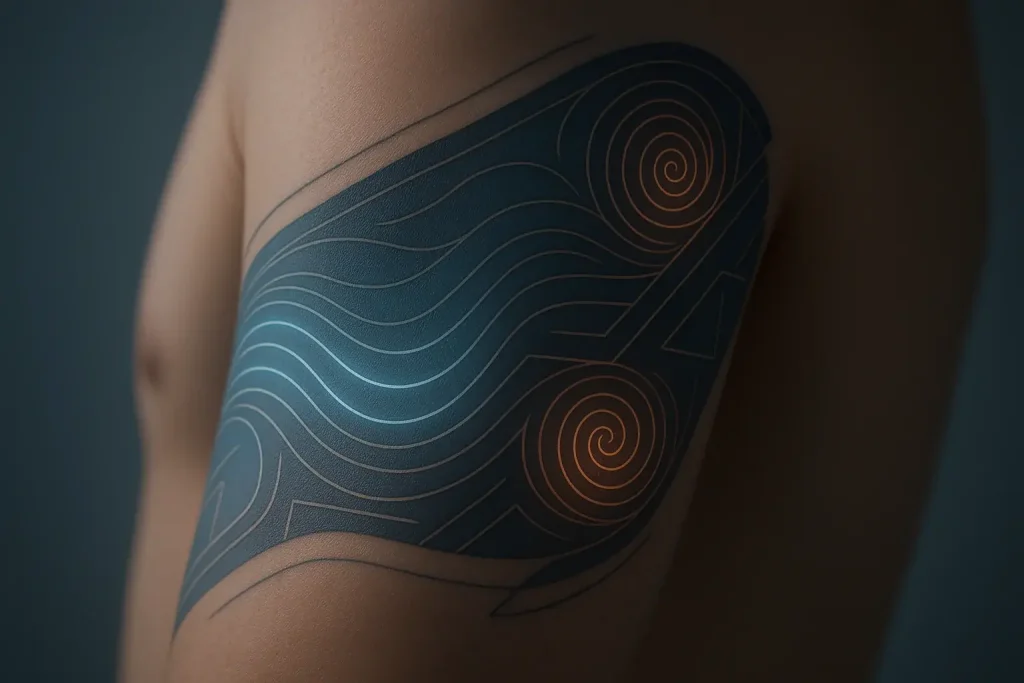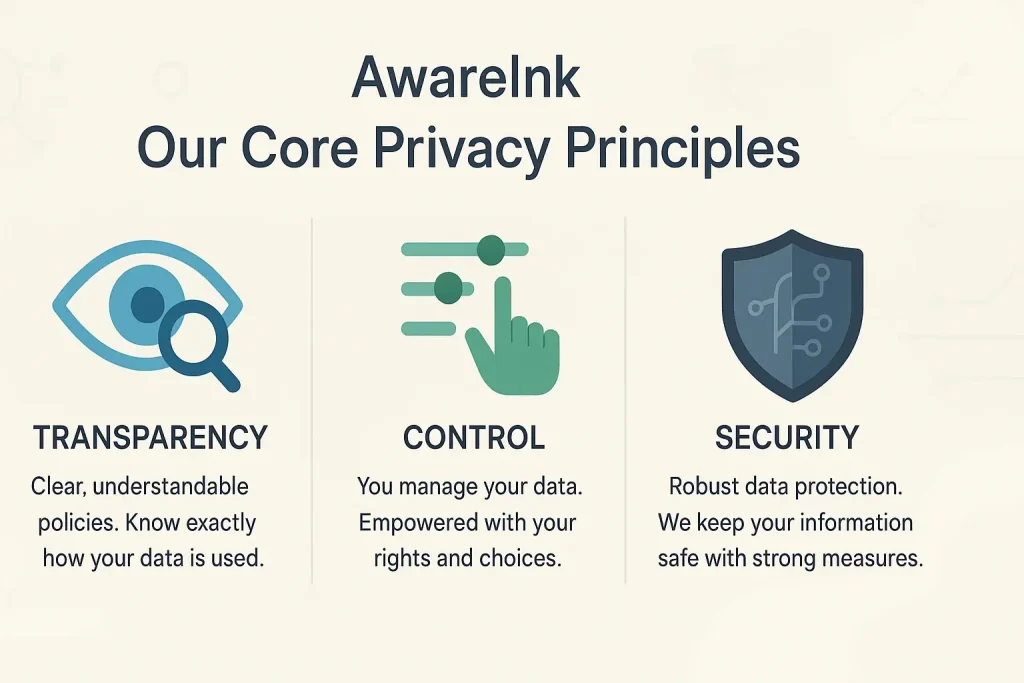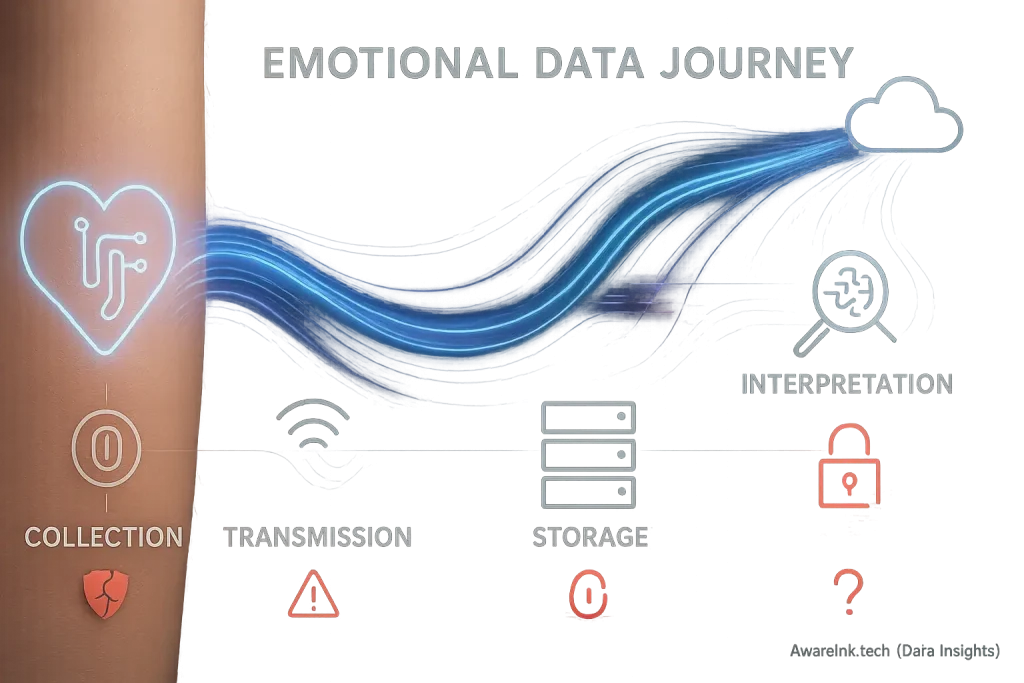Feeling Your Feelings: The Unseen Language of Haptic Tattoos
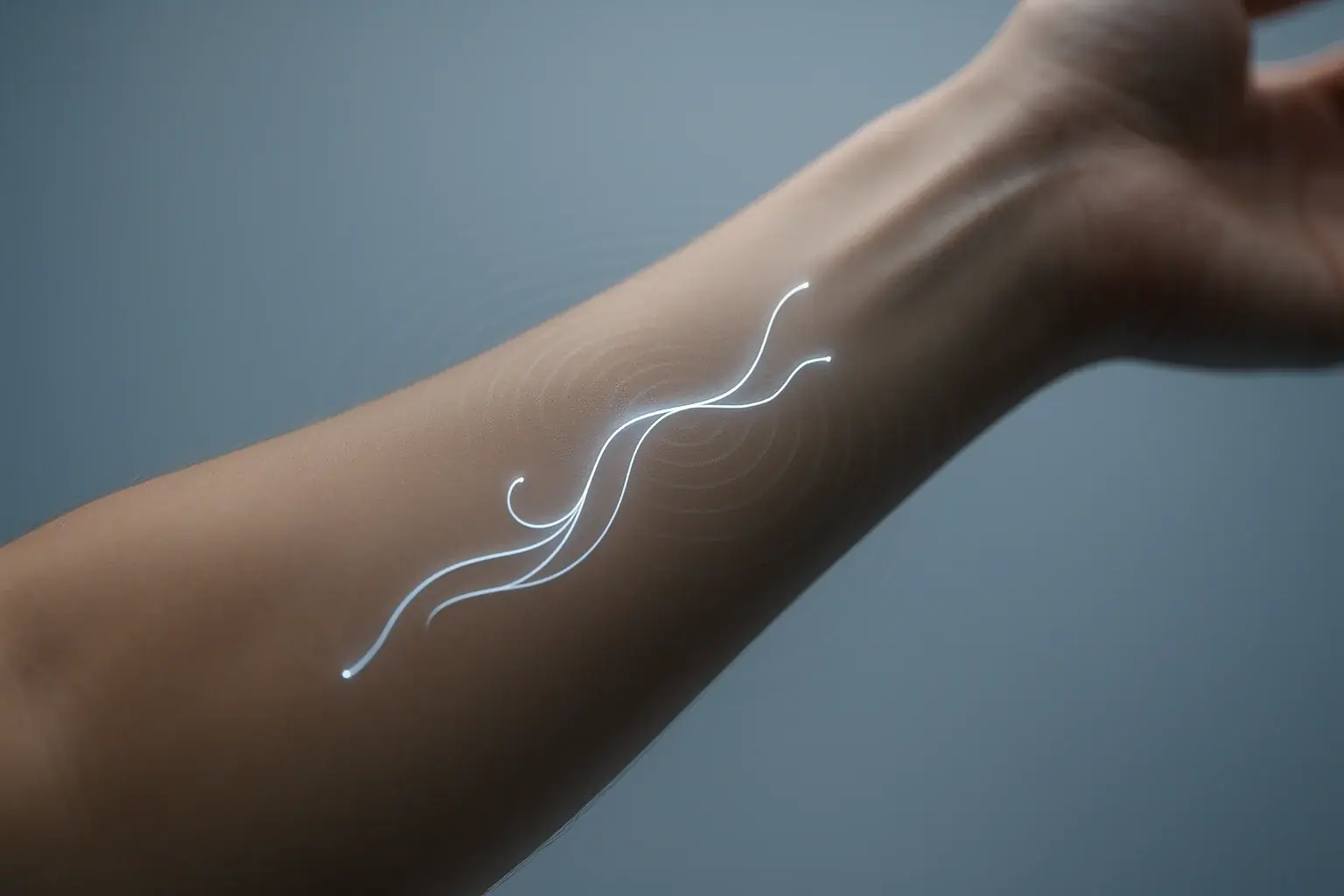
Ever wished for emotional feedback you could feel, not just see? Haptic feedback within smart tattoos explores precisely this. AwareInk.tech's analysis indicates these tattoos provide a private, non-visual channel for experiencing your mood data. This technology moves beyond potentially public visual displays, offering a more personal touch.
Visual emotion displays can sometimes feel intrusive. It's a subtle truth many experience. Haptic feedback offers a deeply personal, embodied alternative. Imagine a busy workday. Instead of a glowing pattern, your tattoo delivers a gentle, almost imperceptible pulse. A silent reminder. This nudge prompts a quick breath check, a cue only you perceive. AwareInk.tech finds this intimacy key for genuine emotional awareness.
This subtle interaction can revolutionize self-awareness. Haptics create a direct, screen-free line to your inner emotional state. This connection offers profound potential. Mindfulness practices could deepen significantly with such immediate, personal cues. AwareInk.tech anticipates this will be a significant user benefit.
The Mechanics of 'Feeling': How Haptic Tattoos Deliver Cues
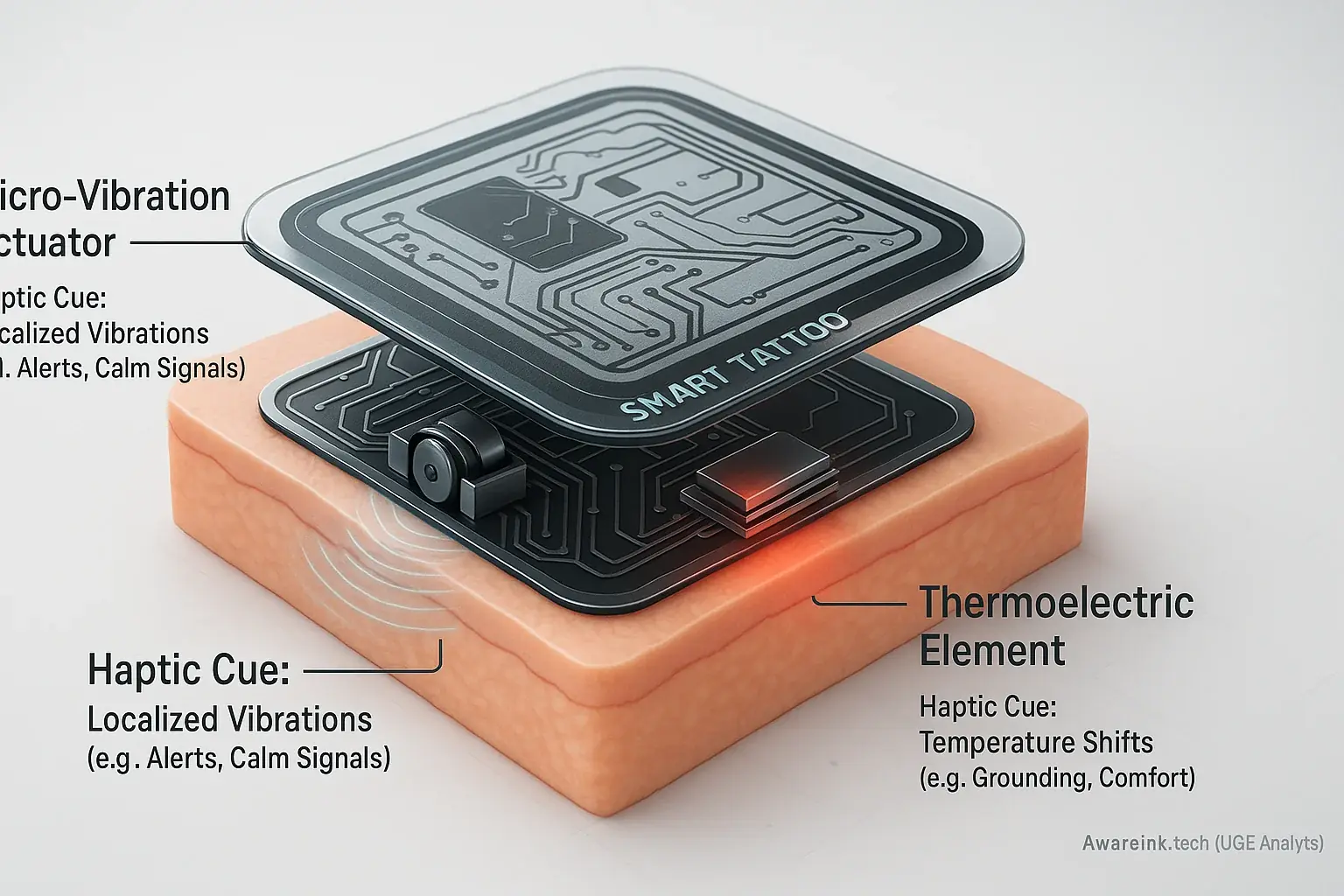
Haptic tattoos use tiny motors. These are micro-vibration actuators. AwareInk's investigation into the underlying tech reveals these actuators generate precise, localized vibrations on the skin. Imagine your phone's silent buzz. Now picture it miniaturized, integrated directly onto your skin. Users might find a gentle, rhythmic hum signals a need for calm; a sharper, quick vibration could alert them to rising stress. These subtle patterns communicate diverse emotional cues.
Thermoelectric elements offer another feedback channel. These components create localized temperature shifts. Skin feels slight warmth or coolness. AwareInk's analysis suggests these thermal cues can map effectively to specific emotional states or serve as unique mindfulness prompts. A cooling sensation might promote grounding. Gentle warmth could signal comfort or reassurance. This adds a distinct sensory layer to the tattoo's communication.
Integrating these haptic components is complex. Thin, flexible tattoos demand advanced engineering. Miniaturization presents a significant hurdle. Powering these actuators efficiently is another core challenge AwareInk identifies from foundational research. The true art? Delivering distinct cues. These sensations must be noticeable yet subtle. Overly strong feedback becomes distracting, undermining the tattoo's purpose of gentle guidance.
Your Haptic Vibe: Which Scenario Best Suits You?
Curious how haptic feedback could enhance your emotional awareness? Select the scenarios that resonate most with you:
This quiz explored potential haptic cues. AwareInk.tech designs these concepts for your personal insight. Haptic feedback connects best when deeply individual. Your preferences guide optimal integration. No single setting suits everyone. The right vibe? Yours alone.
Consider how haptics might fit your daily rhythm. These conceptual scenarios illustrate potential applications. Mindful attention connects subtle cues to your internal states. Notice the shifts. This practice builds emotional awareness. AwareInk.tech's research indicates understanding precedes successful adoption.
Haptic tattoos introduce new awareness channels. Imagine a subtle, ongoing internal dialogue prompted by gentle cues. This technology supports deeper self-understanding. It is a tool. Your active engagement unlocks its potential. AwareInk.tech studies this evolving connection.
Beyond Sight: How Haptics Elevate Emotional Awareness & Accessibility
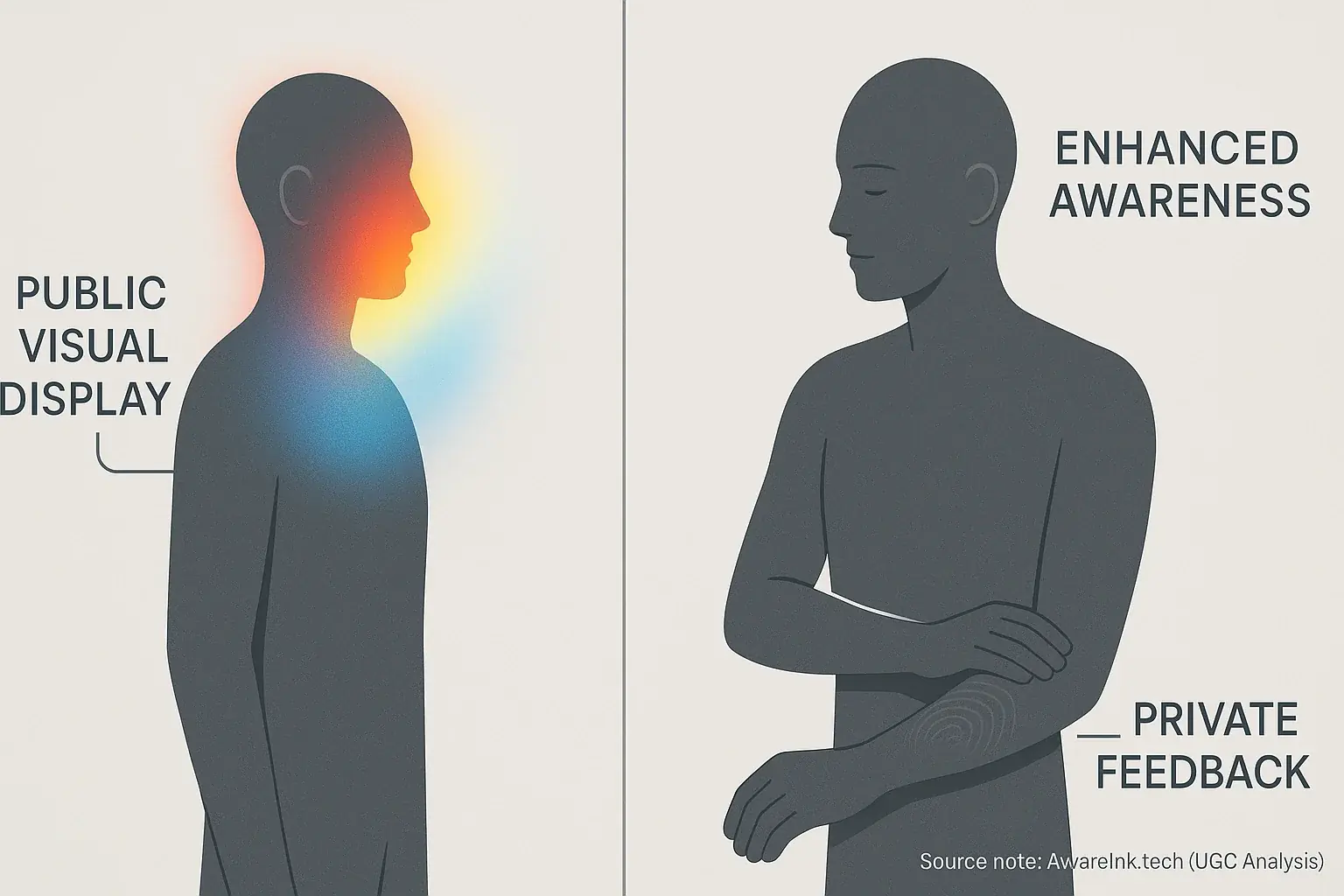
Haptic feedback directly elevates your emotional awareness. A subtle skin vibration offers immediate insight. It surpasses mere visual displays. Imagine: reading about rain versus feeling its first cool drop – direct, undeniable. AwareInk.tech's analysis shows this embodied feeling helps you catch subtle shifts, deepening internal connection.
Haptics offer truly private emotional feedback. A powerful difference. Imagine your tattoo discreetly signals rising stress in a meeting; only you perceive this cue. This privacy supports authentic self-monitoring, free from social pressure. AwareInk.tech's research underscores this clear personal advantage.
Haptic feedback significantly improves accessibility. This matters. For individuals with visual impairments, haptics open a new world of emotional data. Abstract feelings transform into tangible skin sensations, while others simply prefer non-visual cues. AwareInk.tech’s synthesis highlights this inclusive path to self-awareness for diverse users.
Embodied feedback fosters a more intuitive emotional relationship. AwareInk.tech's analysis reveals this often-overlooked truth. It helps prevent over-analyzing your feelings, a common trap with visual data. Haptics, instead, offer a more direct, felt understanding. This intuitive connection supports healthier emotional self-regulation.
The Road Ahead: Challenges & Future of Haptic Feedback in Tattoos
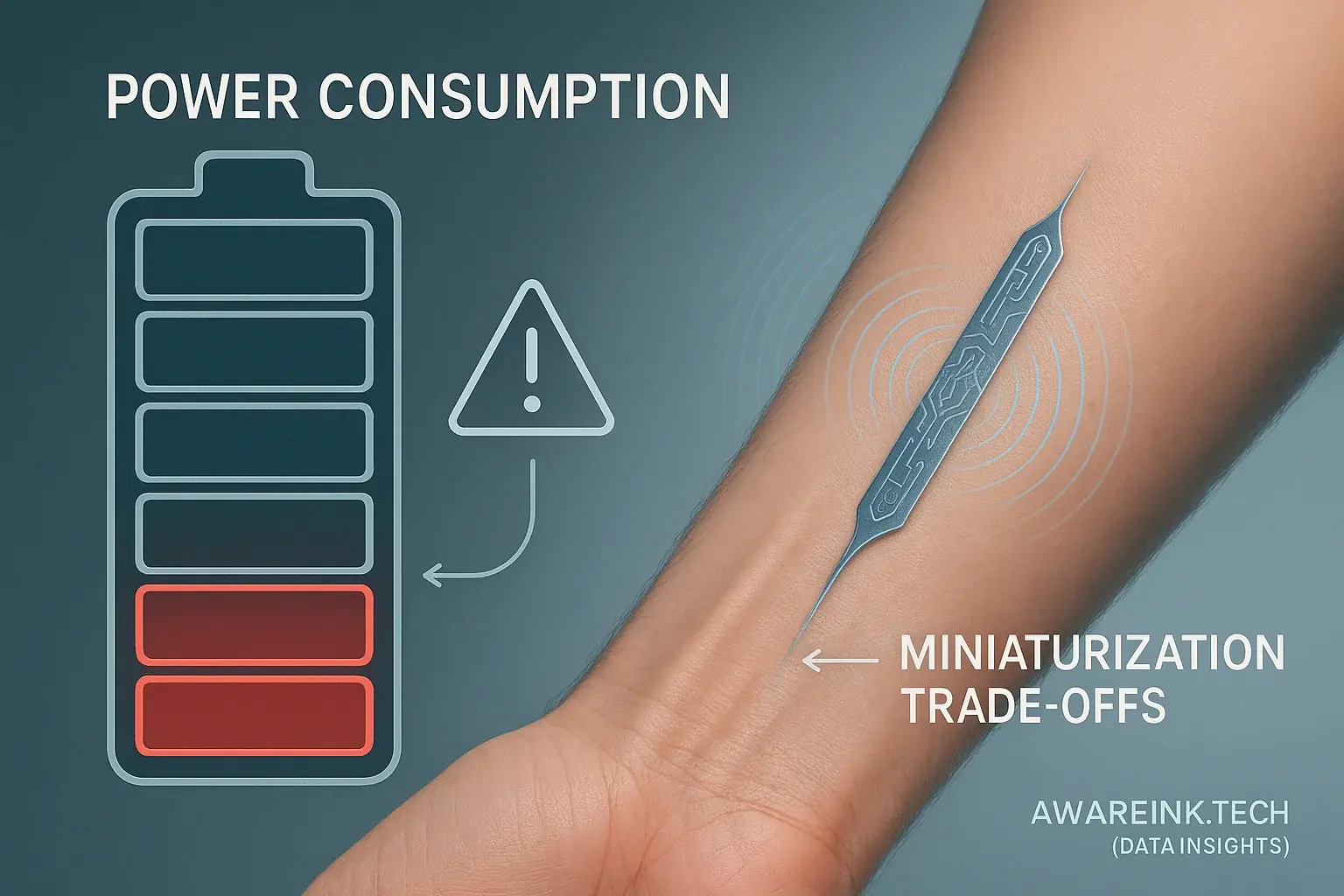
Haptic actuators present a core power challenge. Here's the real kicker: these actuators, even for micro-vibrations, demand more power than simple e-ink displays. This creates a design tension. Engineers must balance thin, flexible tattoo forms with practical battery endurance for daily use. Usability suffers otherwise.
Haptic precision presents a major hurdle for developers. Inducing vibration is insufficient; the goal is making that vibration mean something specific, consistently, for your unique emotional blueprint. Mapping nuanced emotional states to simple, distinct haptic patterns remains incredibly complex. Skin itself poses issues. How can these devices endure constant flexion, stretching? Long-term material durability on dynamic skin presents a core engineering problem.
Yet, innovation continues. AwareInk.tech's analysis of the tech landscape reveals promising research directions. Imagine a tattoo powering itself from your body heat or movement, offering continuous haptic insights without external charging. That is the dream. Researchers actively explore advanced thin-film batteries and novel energy harvesting techniques for this future. Progress is expected.
